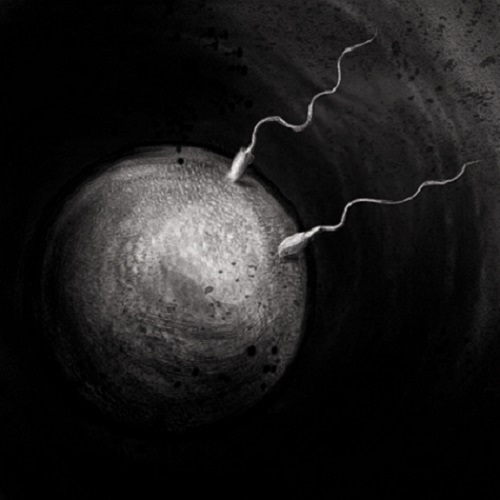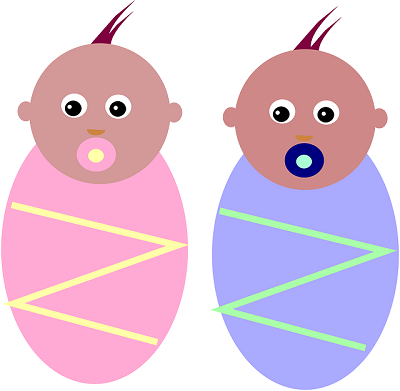In the United States, it is estimated that for every 1,000 children born, 33.3 of them will be twins; 22.8 of which will be fraternal and 4 of which will be identical. Throughout history, it has been widely held that twins could only be born as either identical or fraternal; however, this notion changed in 2007 when the birth of two semi-identical twins were discovered in the U.S.
Related article: Conjoined Triplets (Is It Even Possible?)
Identical vs. Fraternal Twins
The way in which twins become identical or fraternal depends entirely upon what happens during fertilization of the mother’s egg. Identical, or monozygotic twins, arise from a single fertilized egg that has been split into two. Identical twins will therefore have identical genetic material, which accounts for why these twins are often indistinguishable from each other.
Monochorionic diamniotic twins, which are twins that share a single placenta but have two separate amnions, are almost always identical. The visualization of a single placenta on an early ultrasound is therefore an early indication to healthcare providers that the mother will give birth to identical twins.
On the other hand, fraternal twins, which are also referred to as dizygotic twins, result from the fertilization of two different eggs, which have been released simultaneously during a single ovulation cycle, by two different sperm cells. While fraternal twins are considered to be slightly more genetically similar to each other as compared to any other pair of siblings, their genetical material is not identical.
What Are Semi-Identical Twins?
Semi-identical twins, which have also been referred to as sesquizygotic twins, have been described as the intermediate between identical and fraternal twins. Genetically speaking, semi-identical twins have been shown to share 100% of their maternal genetical material, but only about 75% of their shared paternal genetic material. To date, there have only been two cases of semi-identical twins reported in the world.
Case #1
In the 2007 case, doctors didn’t realize that the twins were sesquizygotic until after they were born. It was the genitalia of one twin that caught their attention. The twin was born with ambiguous genitalia. Chromosome analysis showed that both twins were chimeras, with both having some ‘male cells’ and some ‘female’ cells. However, born with both ovarian and testicular tissue, one twin was believed to be a true hermaphrodite. According to various sources, the child was being raised as a girl. The other twin was anatomically male.
Case #2: The 2014 Discovery (Identified In Pregnancy For The First Time Ever)
In 2014, a 28-year-old woman in Brisbane, Australia underwent her six-week ultrasound appointment to find that she would be giving birth to a pair of identical twins. Her physician came to this conclusion when discovering that the two fetuses shared a single placenta.
Furthermore, the absence of a chorion extending between the layers of the intertwin membrane was also used to confirm a monozygotic pregnancy. However, when this young woman attended her 14-week ultrasound appointment, her healthcare providers were shocked to find out that her twins were different genders, thereby making it impossible for them to be genetically identical.
What Causes Semi-Identical Twins To Occur?
Following the birth of these Brisbane semi-identical twins, which was the second time in history that this has ever occurred, deputy vice chancellor of research at the University of New South Wales, Dr. Nicholas Fisk, began his work on fully understanding this phenomenon. After genotyping the amniotic fluid taken from each of the twin’s sacs, Dr. Fisk’s team found that the twins were in fact identical in terms of sharing their mother’s genetic material, but only shared 78% of their paternal genetic material. In total, the twins were found to be 89% identical, thereby indicating seszygosis.
From this analysis, Dr. Fisk hypothesized that these semi-identical twins were formed as a result of a rare fertilization process in which a single egg was fertilized by two sperm.
Normally, once a sperm comes into direct contact with the cell membrane of the egg, the acrosomal apparatus is formed to allow the sperm to further penetrate the egg. As the sperm passes through the cell membrane and fully penetrates the egg, the cortical reaction occurs. During the cortical reaction, calcium ions are released to depolarize the cell membrane and prevent any further fertilization of the egg by multiple sperm cells.
However, during the conception of semi-identical twins, the ability of two sperm cells to penetrate a single egg, a process known as dispermic fertilization, somehow occurred. Dispermic fertilization therefore causes three different sets of chromosomes to be involved in this process. More specifically, a single pronucleus from the mother and two pronuclei from the father form a tripolar single apparatus, which ultimately results in heterogenic cytokinesis. Heterogenic cytokinesis involves the generation of cells with different chromosomal contents.
Dr. Fisk believes that, while under normal conditions an embryo with three sets of chromosomes would not survive as a fetus, that these three sets split into two separate sets of genetic material to form the semi-identical twins. This process by which sesquizygosis occurs has been termed as heterogenesis.
Validation
After their discovery, the Australian team of researchers began to question whether the incidence of semi-identical twins was not a rare occurrence but was just underreported or incorrectly classified as fraternal twins. To address this concern, the researchers conducted a wide scale study of 968 different dizygotic twin pairs, in which they performed pangenome single-nucleotide polymorphism genotyping on these individuals. From their analysis, Dr. Fisk’s team confirmed that the occurrence of semi-identical twins was, in fact, extremely rare.
Healthy Brisbane Semi-Identical Twins
Upon genotyping of the semi-identical Brisbane twins, the female twin was diagnosed with a condition known as gonadal dysgenesis, which is a known complication that arises following the chimerism of the sex chromosomes that occurs during heterogenesis. Gonadal dysgenesis is the defective development of the individual’s reproductive system, which in this case resulted in underdeveloped ovaries. As a result of this condition, when the female twin reaches three years old, she will have to undergo an oophorectomy, which is the removal of both of her ovaries. The twins are otherwise healthy and developmentally normal.
If you go to Google and type in “semi-identical twins,” you will see various images of fraternal twins such as this one. There are currently no pictures of the world’s only 2 documented cases.
Featured image sketch by Desiree Walker
References
“Semi-identical twins are rare, and doctors say they’ve identified the second case ever” – CNN
⦁ Gabbett, M. T., Laporte, J., Sekar, R., Nandini, A., Sapkota, Y., Jiang, P., Zhang, H., et al. (2019). Molecular Support for Heterogenesis Resulting in Sesquizygotic Twinning. New England Journal of Medicine 380; 842-849. ⦁ DOI: 10.1056/NEJMoa1701313.





